Tarek Ahmed. Reservoir engineering handbook
Подождите немного. Документ загружается.


where k
v
= vertical permeability
k
h
= horizontal permeability
Allard and Chen (1988) pointed out that there are an infinite number
of solutions to Equation 10-28, representing all possible reservoir-aquifer
configurations. They suggested that it is possible to derive a general solu-
tion that is applicable to a variety of systems by the solution to Equation
10-28 in terms of the dimensionless time t
D
, dimensionless radius r
D
, and
a newly introduced dimensionless variable z
D
.
where z
D
= dimensionless vertical distance
h = aquifer thickness, ft
Allen and Chen used a numerical model to solve Equation 10-28. The
authors developed a solution to the bottom-water influx that is compara-
ble in form with that of van Everdingen and Hurst.
W
e
= B ∆p W
eD
(10 - 31)
They defined the water influx constant B identical to that of Equation
10-21, or
B = 1.119 φ c
t
r
e
2
h(10-32)
Notice that the water influx constant B does not include the encroach-
ment angle θ.
The actual values of W
eD
are different from those of the van Everdin-
gen-Hurst model because W
eD
for the bottom-water drive is also a func-
tion of the vertical permeability. Allard and Chen tabulated the values of
W
eD
as a function of r
D
, t
D
, and z
D
. These values are presented in Tables
10-3 through 10-7.
The solution procedure of a bottom-water influx problem is identical
to the edge-water influx problem outlined in Example 10-7. Allard and
Chen illustrated results of their method in the following example.
z
h
rF
D
ek
= (10 - 30)
678 Reservoir Engineering Handbook
Reservoir Eng Hndbk Ch 10 2001-10-25 14:22 Page 678

Example 10-8
An infinite-acting bottom-water aquifer is characterized by the follow-
ing properties:
r
a
=∞ k
h
= 50 md F
k
= 0.04
φ=0.1 µ
w
= 0.395 cp c
t
= 8 × 10
−6
psi
−1
h = 200′ r
e
= 2000′ = 360°
The boundary pressure history is given below:
Time, days p, psi
0 3000
30 2956
60 2917
90 2877
120 2844
150 2811
180 2791
210 2773
240 2755
Calculate the cumulative water influx as a function of time by using
the bottom-water-drive solution and compare with the edge-water-drive
approach.
Solution
Step 1. For an infinite-acting aquifer:
r
D
=∞
Step 2. Calculate z
D
from Equation 10-30.
Step 3. Calculate the water influx constant B.
B = 1.119 (0.1) (200) (8 × 10
−6
) (2000)
2
= 716 bbl/psi
z
D
==
200
2000 0 04
05
.
.
Water Influx 679
(text continued on page 702)
Reservoir Eng Hndbk Ch 10 2001-10-25 14:22 Page 679
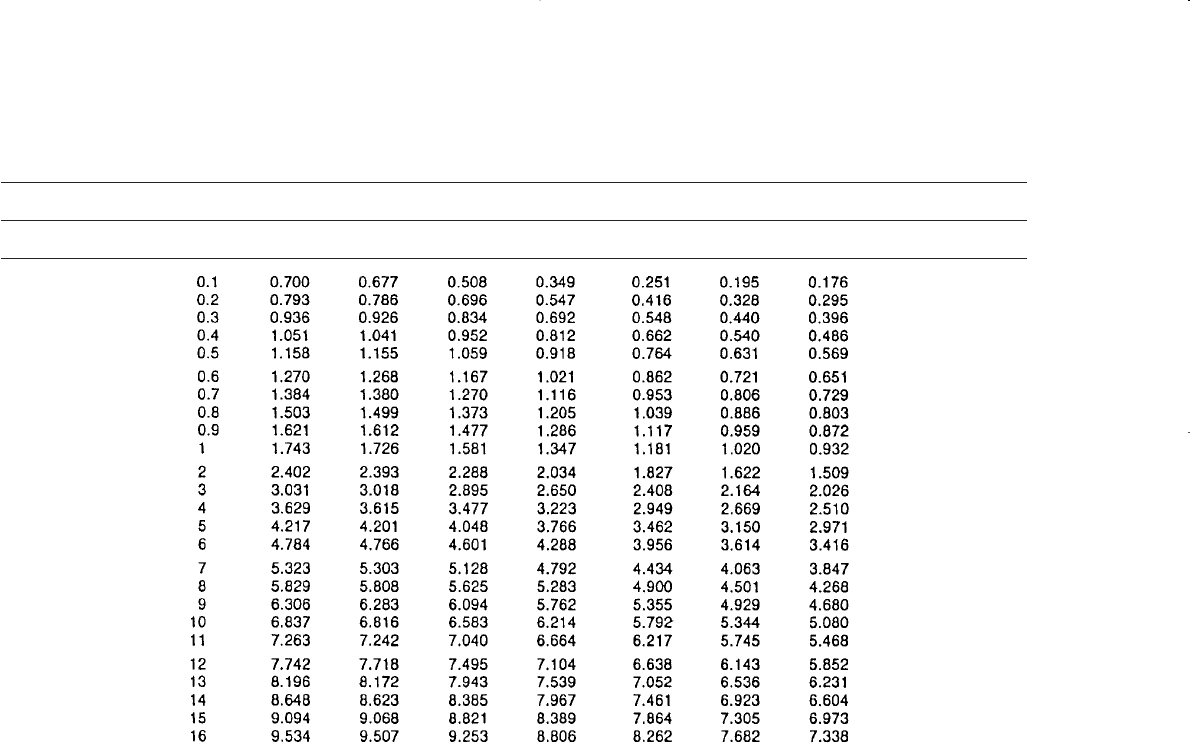
680 Reservoir Engineering Handbook
Table 10-3
Dimensionless Water Influx, W
eD
, for Infinite Aquifer
(Permission to publish by the SPE)
z
D
′
t
D
0.05 0.1 0.3 0.5 0.7 0.9 1.0
Reservoir Eng Hndbk Ch 10 2001-10-25 14:22 Page 680
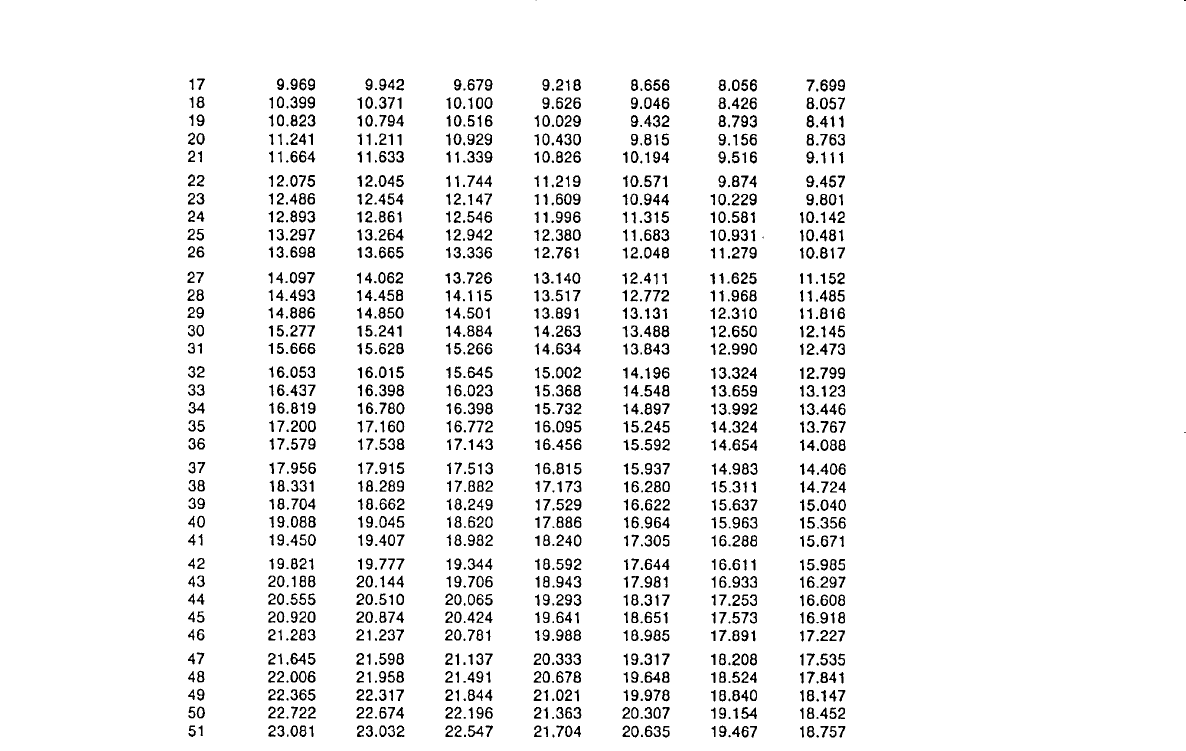
Water Influx 681
(table continued on next page)
Reservoir Eng Hndbk Ch 10 2001-10-25 14:22 Page 681

682 Reservoir Engineering Handbook
Table 10-3 (continued)
z
D
′
t
D
0.05 0.1 0.3 0.5 0.7 0.9 1.0
Reservoir Eng Hndbk Ch 10 2001-10-25 14:23 Page 682
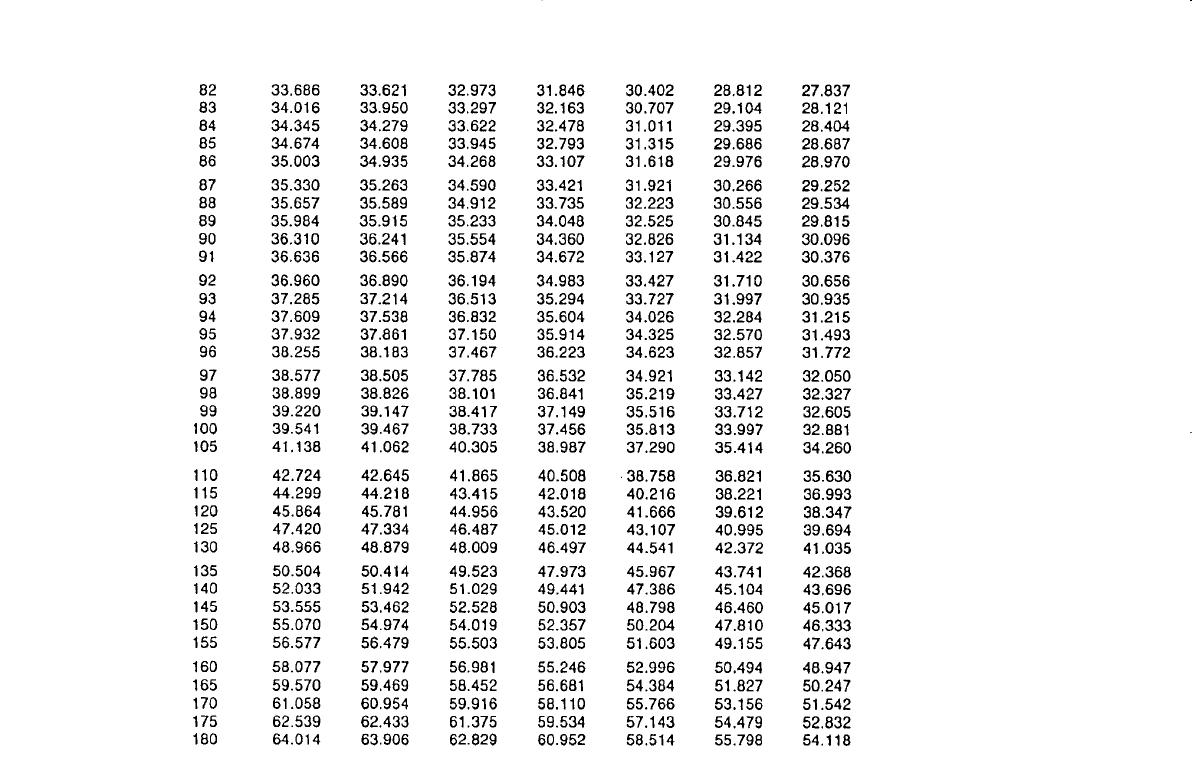
Water Influx 683
(table continued on next page)
Reservoir Eng Hndbk Ch 10 2001-10-25 14:23 Page 683
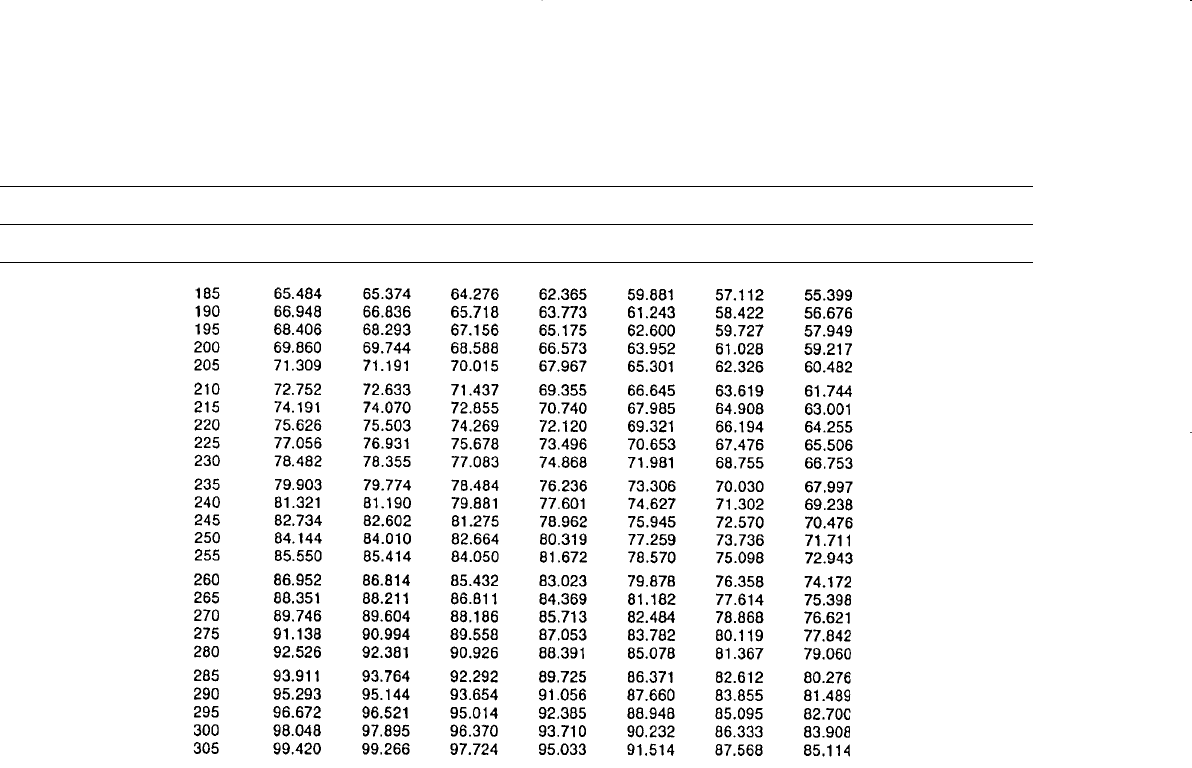
684 Reservoir Engineering Handbook
Table 10-3 (continued)
z
D
′
t
D
0.05 0.1 0.3 0.5 0.7 0.9 1.0
Reservoir Eng Hndbk Ch 10 2001-10-25 14:23 Page 684
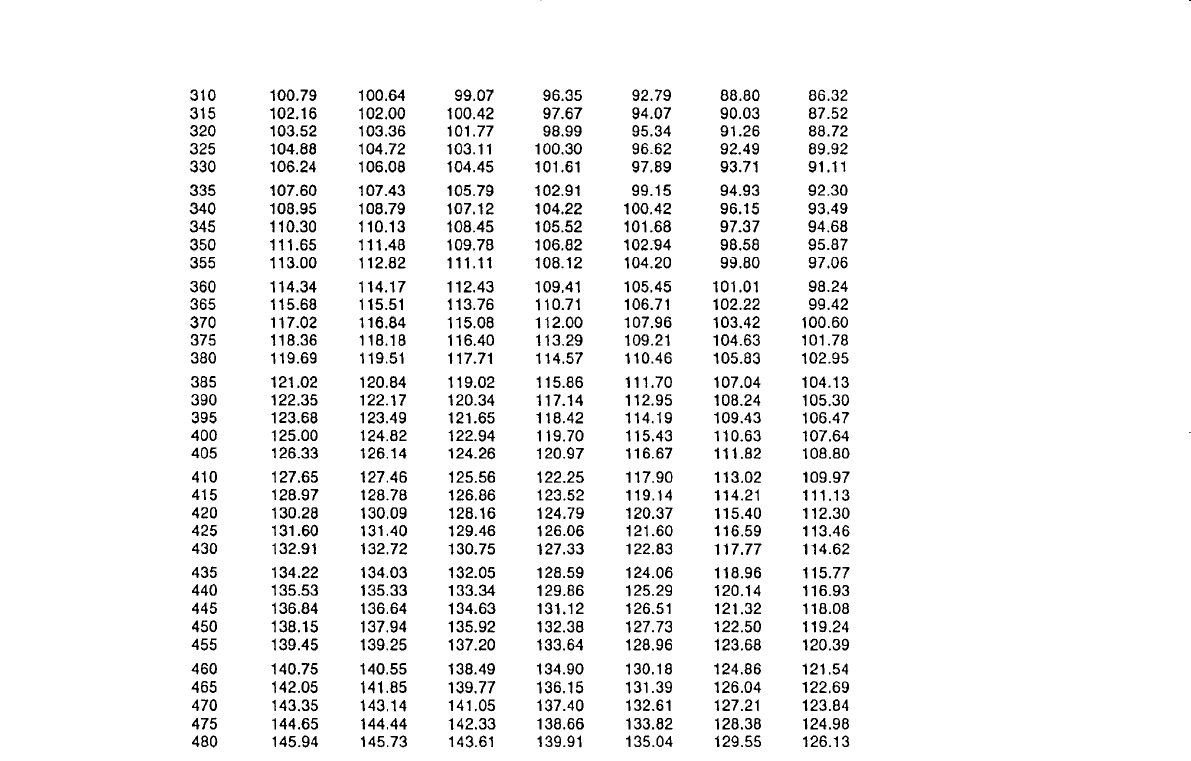
Water Influx 685
(table continued on next page)
Reservoir Eng Hndbk Ch 10 2001-10-25 14:23 Page 685
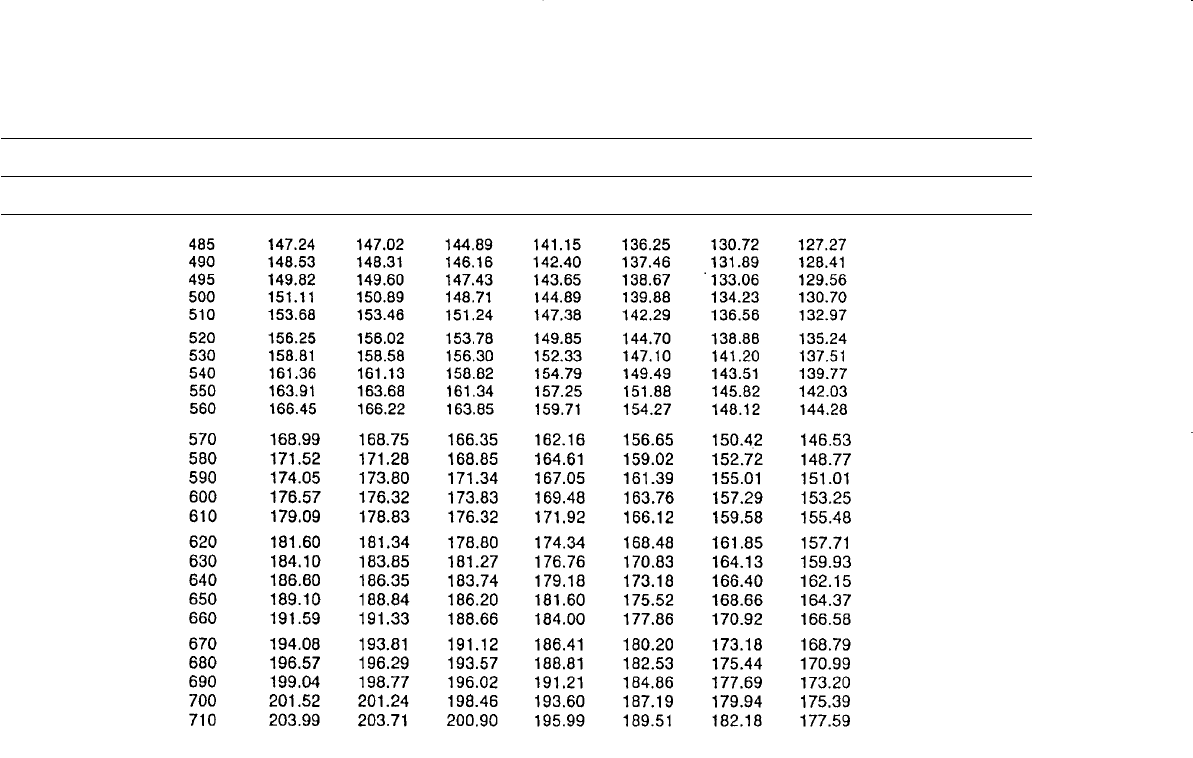
686 Reservoir Engineering Handbook
Table 10-3 (continued)
z
D
′
t
D
0.05 0.1 0.3 0.5 0.7 0.9 1.0
Reservoir Eng Hndbk Ch 10 2001-10-25 14:23 Page 686
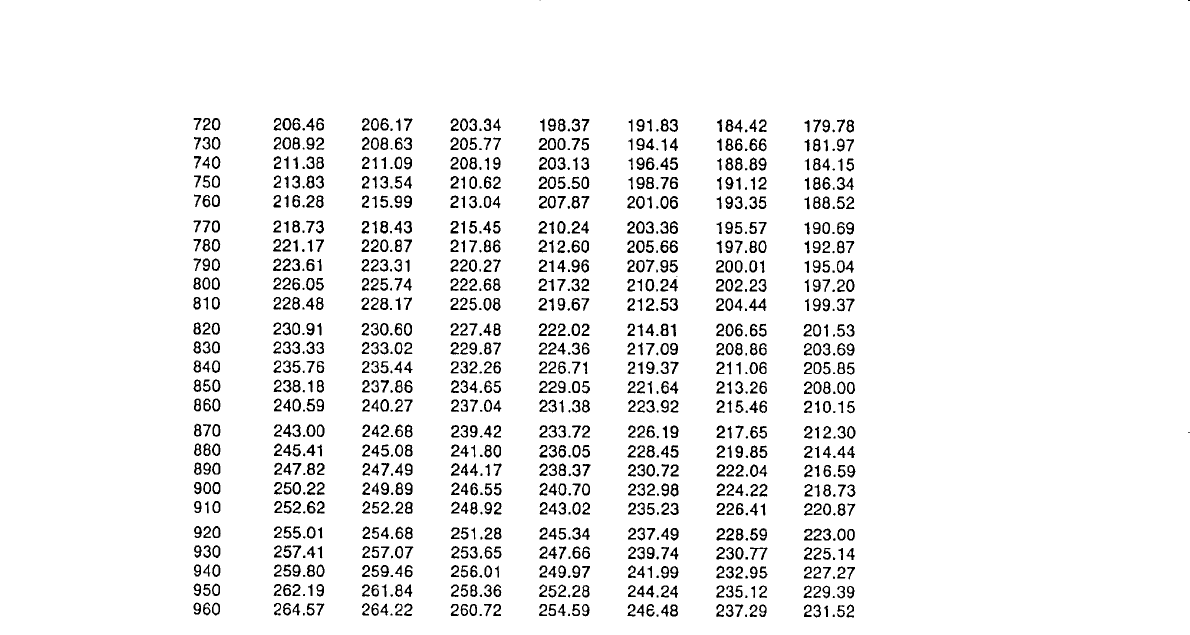
Water Influx 687
(table continued on next page)
Reservoir Eng Hndbk Ch 10 2001-10-25 14:23 Page 687
